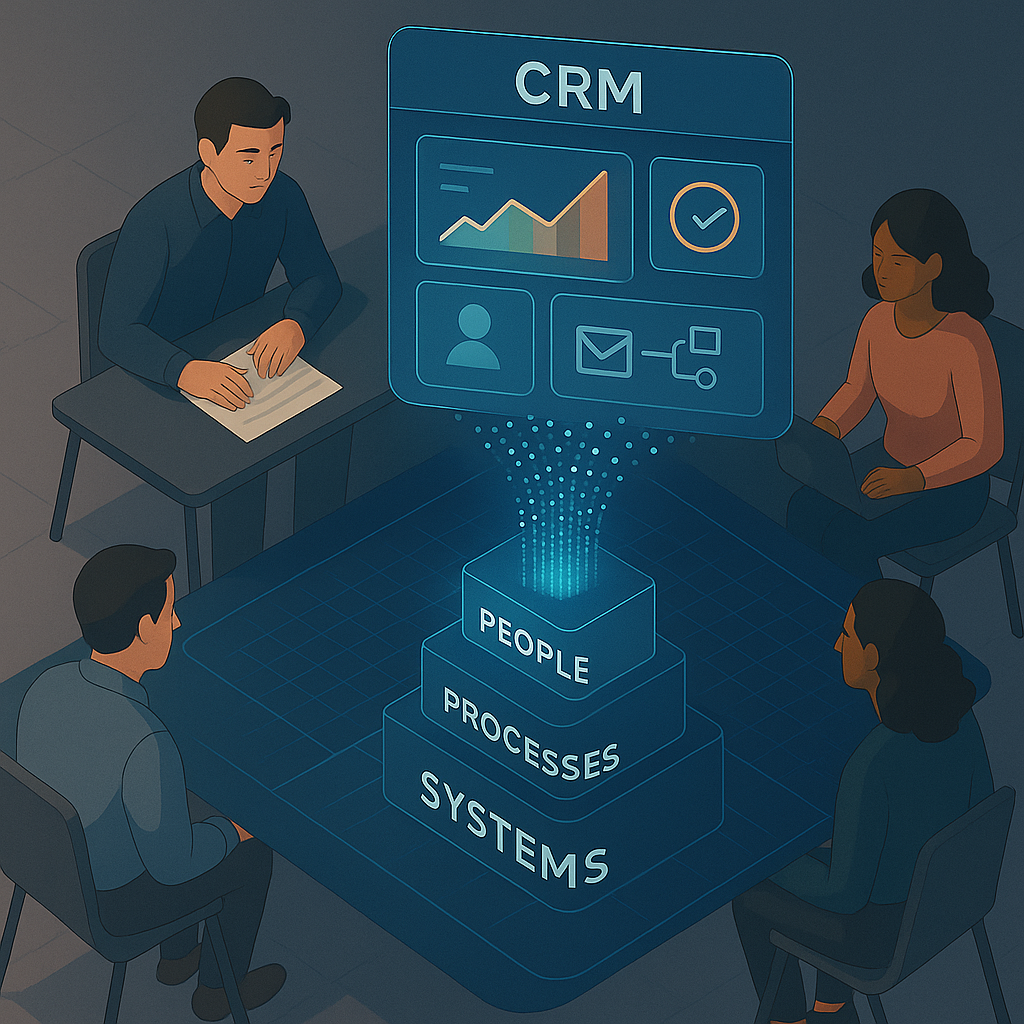AI-Enhanced CRM: When Intelligence Meets the Blueprint for Growth
There’s a quiet revolution happening in CRM. Not another gimmicky “AI assistant,” but a shift in how businesses think about relationships. Because...
2 min read
Bradley Michel
:
Oct 23, 2025 9:30:01 AM
When your CRM and ERP aren’t talking to each other, it’s like running a business with two sets of books.
Sales sees one version of the truth. Operations sees another. Leadership spends hours reconciling the two.
At best, this slows things down. At worst, it undermines trust in your data — and that means unreliable forecasts, inefficient processes, and missed opportunities for growth.
If any of the following sound familiar, your systems need a serious conversation.
The symptom:
Sales forecasts never quite match operational reality. Deals are marked as Closed Won in HubSpot but remain invisible in the ERP. Stock levels, delivery times, or invoices lag behind what’s been promised to customers.
The impact:
Overpromising and underdelivering.
Sales and operations planning against different data.
Finance struggling to produce accurate cash-flow projections.
Why it happens:
Your CRM and ERP both hold critical parts of the customer story, but they don’t share them. Sales tracks opportunity and revenue; ERP tracks fulfilment and cost — and neither has the full picture.
How to fix it:
Integrate deal and order data automatically. When HubSpot reflects live stock, order, and invoicing data from your ERP, forecasts become factual, not fictional.
Cogent’s OW Sync Connector links HubSpot and Orderwise, syncing customers, orders, and products in real time — so your teams plan from the same data.
The symptom:
Sales updates don’t reach operations until someone emails a spreadsheet. Ops flags order delays, but sales only find out when the customer does. Meetings revolve around “whose data is right?” instead of “what’s next?”
The impact:
Rework, delays, and duplicated effort.
Customer experience breakdowns.
Wasted time reconciling systems rather than serving clients.
Why it happens:
CRM and ERP systems are built for different audiences — one for people, one for products. Without integration, neither team sees the end-to-end process from quote to delivery.
How to fix it:
Map your shared data first: customers, orders, products, and pricing. Define which system owns each data point, then automate the sync.
When both teams operate from a single source of truth, handovers become seamless and collaboration actually moves the business forward.
The symptom:
Your monthly performance report takes three days to compile and still isn’t trusted. You export from multiple systems, clean data manually, and end up with static spreadsheets that are out of date before they’re presented.
The impact:
Decisions made on conflicting or stale data.
Lost confidence in dashboards.
Strategy driven by hindsight, not foresight.
Why it happens:
Reporting tools can only analyse what they can access. When CRM and ERP data live in silos, analysis becomes an exercise in copy-paste rather than clarity.
How to fix it:
Centralise reporting in HubSpot, bringing ERP data into dashboards automatically. With automation maintaining data integrity, you get live visibility into both pipeline and operations — without manual effort.
Integrated reporting turns confusion into clarity. Everyone sees the same numbers, and decisions finally move at the speed of the business.
Fixing this isn’t just an IT project. It’s a business transformation.
At Cogent, we apply the APPS Principle™ - aligning People, Processes, and Systems to drive sustainable Growth. Integration sits at the heart of that model. When data flows freely, so do decisions, accountability, and results.
The outcome?
Reliable forecasting
Cohesive sales and operations planning
Confident, data-driven growth
When your CRM and ERP operate in isolation, you’re not just missing data - you’re missing alignment. Sales, ops, and finance each work from their own version of the truth, and growth stalls in the gaps between them.
The fix isn’t more meetings or manual exports - it’s integration.
Start by identifying the gaps, mapping your shared data, and automating the connection. With the right integration in place, you’ll replace manual fixes with measurable momentum.
Here's some others we think you'll love

There’s a quiet revolution happening in CRM. Not another gimmicky “AI assistant,” but a shift in how businesses think about relationships. Because...
You’ve outgrown spreadsheets. Your team’s juggling leads, customers, and chaos. So, you buy a CRM. Six months later, you’re already outgrowing that...
Let’s be real: most CRMs sit there collecting dust or confusion. Sales says it’s slow. Marketing says the data’s a mess. Leadership doesn’t trust the...